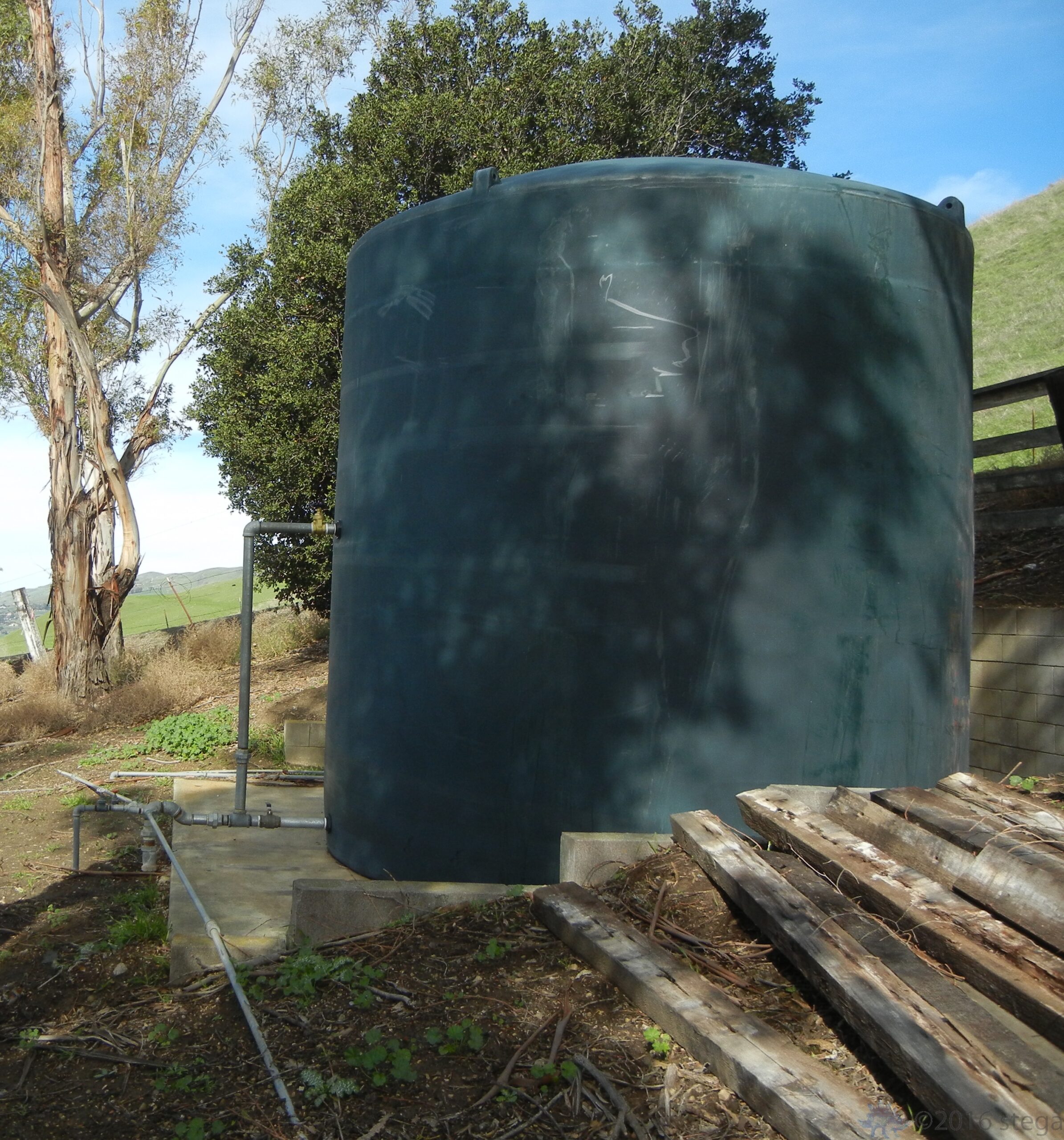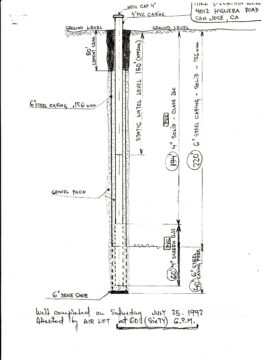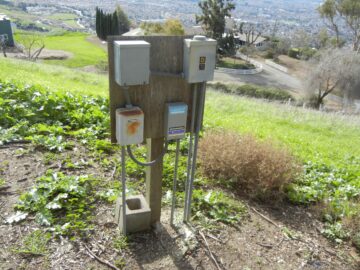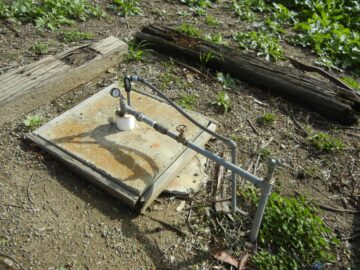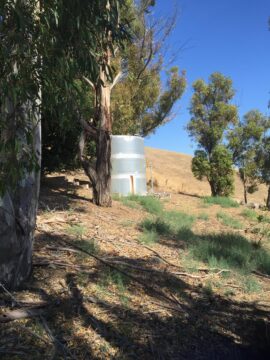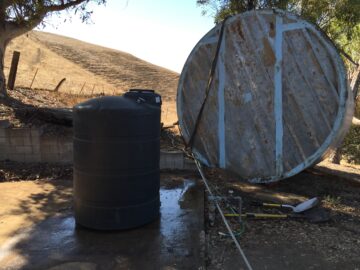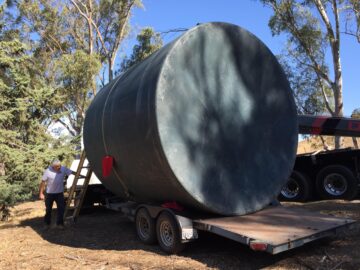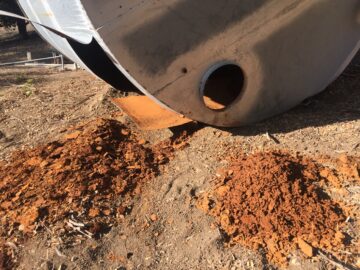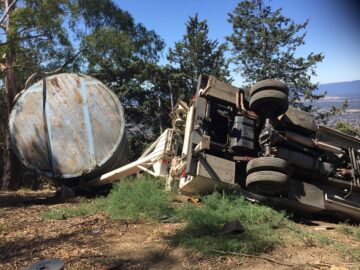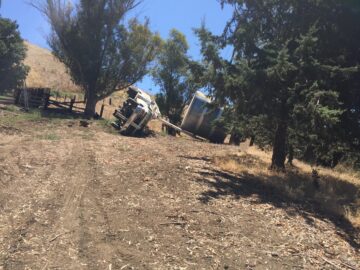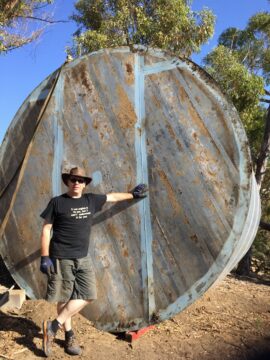One of the critical inspections we had done prior to buying Purgatory was a test of the well. We’re up high enough on the hillside that city water can’t reach us. (Same deal for natural gas lines.) So our only source of potable water is a hole in the ground.
Said hole was made in 1992. We know from the Doc this was an improvement as the property was previously serviced by a spring that is farther up the hill and to which we may actually own the rights. (I have to figure out how to sort that bit out someday.) Here’s the original diagram that was part of the permit.
Getting you water from a hole in the ground changes your relationship to it. There is no faceless water company sending you bill each month and the worry about treatment chemicals and lead are replaced with worries about chlorates and nitrates, and more importantly, earwigs shorting out the controller for the pump at the well head. It means looking three hundred yards out and up the hill and being comforted when we see the light at the well controls is shining and thus water is being pumped into storage tank. Then if some thing goes terribly wrong we call people who specialize in water wells.
So in addition to a really deep hole in the ground there are obviously other components necessary to obtain, store, route and use water that comes out of your very own well.
See the shot of our well head, and the control panel. We have plans to “modernize” things: we want to begin monitoring our raw usage and sort out housing boxes that are a bit more insect proof.
And then there is our spiffy new well tank. As long time readers know, this was one of the very first things we updated upon taking ownership of the house.
First are shots of the old steel tank. The tank replacement in July though did not go particularly smoothly. We had a little “make do” tank for a couple of weeks. Since we hadn’t moved down from San Francisco yet, it was more than adequate.
A few weeks later, this lovely new poly tank was put in place.
All of this was great as the old tank was filled with rust. But more about that in the next post.

